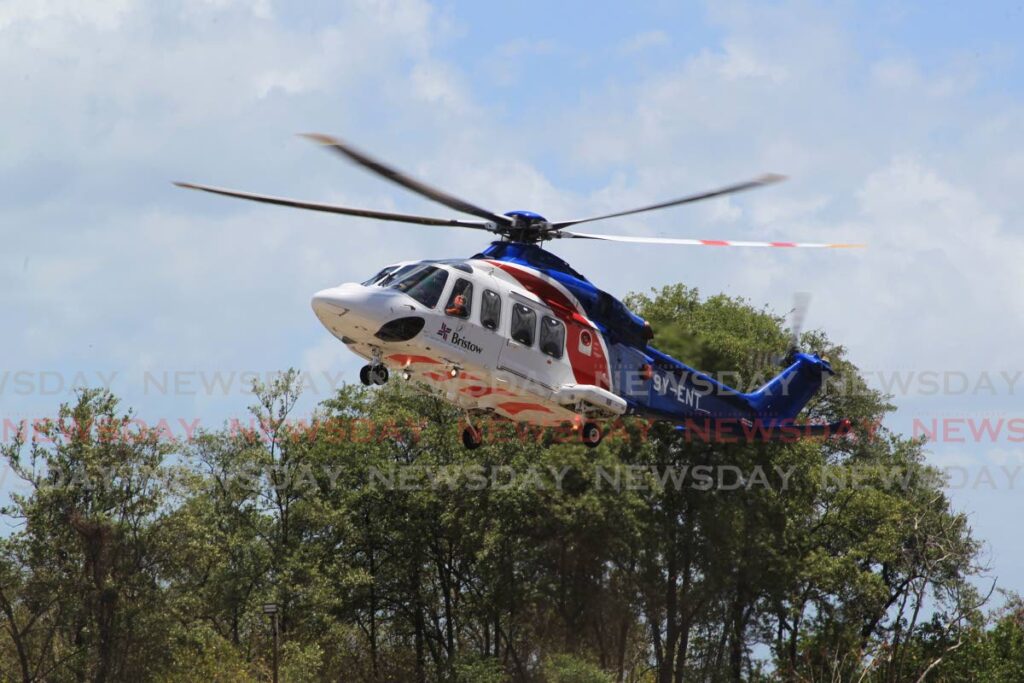Rules for running heliports

Aviation operations are pointedly underpinned by the uncompromising compliance with international safety standards, in which there is no grey area.
TT, as a signatory to the Convention on International Civil Aviation (commonly known as the Chicago Convention), has a serious international treaty obligation to comply with the articles of the convention and its annexes.
Section 5 of the Civil Aviation Act says one of the functions of the TT Civil Aviation Authority (TTCAA) is to maintain a standard of safety and efficiency in the civil aviation system that is at least equal to the standard of safety prescribed by the Chicago Convention and any other aviation convention, agreement or understanding to which TT is a party.
Section 5 says that in performing it functions and exercising its powers, the TTCAA shall have as its paramount consideration the safety of aviation.
One of the comprehensive strategic objectives of the ICAO is enhancing global civil aviation safety, with focus primarily on a country's regulatory oversight capabilities.
In discharging its safety oversight responsibilities, the TTCAA, in accordance with Section 33 of the act and with the approval of the minister and Parliament, made regulations to comply with ICAO Annex – 14 Aerodromes. The regulations are known as the Civil Aviation [(No 12) Aerodrome Licensing] Regulations.
The act defines an aerodrome as “any area of land or water designed or equipped, set apart or commonly used for affording facilities for landing and departure of aircraft and includes any area or space, whether on the ground, on the roof of a building or elsewhere which is designed, equipped or set apart for affording facilities for the landing and departure of aircraft, capable of descending and climbing vertically and also includes an airport which has the meaning given to it under the Airports Authority Act.”

ICAO Annex 14 Volume II defines a heliport as “an aerodrome or a defined area on a structure intended to be used wholly or in part for the arrival, departure and surface movement of helicopters.”
A helicopter is a rotary wing aircraft, and also called a rotorcraft.
The TT Aerodrome Regulations prescribes that no one shall run an aerodrome in TT unless it has an aerodrome licence issued by the TTCAA, and prescribes the procedure for obtaining one.
Therefore, people who run commercial helicopter operations on the basis of an air operators certificate (AOC) must do so using a licensed aerodrome where the helicopters take off and land.
Applications for aerodrome licences must be accompanied by an aerodrome manual applicable to the aerodrome for which the application is made. This manual must contain the aerodrome operating procedures and safety management system (SMS), including an emergency plan. The SMS is required for effective safety management at the aerodrome and consists of four components and 12 elements representing the minimum requirements for a safety-management system implementation.
While the framework components for SMSs for AOC holders, approved maintenance organisations (AMO) and aerodromes are very similar, the elements are quite different, as each element pertains to the specific operations of an AMO, AOC or aerodrome. The TTCAA may, on the basis of acceptable aeronautical studies, approve an integrated SMS that incorporates the requirements for AMO, AOC and aerodrome once it is satisfied that the required levels of safety or equivalent standards prescribed by the regulations will be maintained.
A SMS is a very critical safety management tool for ensuring that all aerodrome operations meet the highest levels of safety. A SMS requires aerodrome operators to develop and maintain a formal processes that ensure that all hazards that can impact safety in the operations are identified. Hazard identification shall be based on a combination of reactive, proactive and predictive methods of safety data collection. Aerodrome operators must also develop and maintain formal processes for analysing, assessing and controlling the safety risks in training operations.
Aerodrome operators must develop and maintain means to verify the safety performance of aerodrome organisations and validate the effectiveness of safety risk controls. The safety performance of aerodrome organisations must be verified in reference to the safety performance indicators and safety performance targets of its SMS.
Change management is another key element of SMS. Aerodrome operators must develop and maintain a formal process to identify changes within their organisations that may affect established processes and services, and describe the arrangements for continued acceptable safety performance before implementing changes.
There can be very serious liability implications associated with running commercial operations from unlicensed aerodromes.
It is an offence under the act to run aerodromes without valid licences and anyone who does so is liable on summary conviction to a fine of $100,000.
caption: AW139 helicopter. manufactured by Leonardo


Comments
"Rules for running heliports"